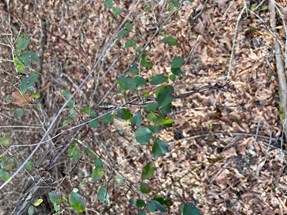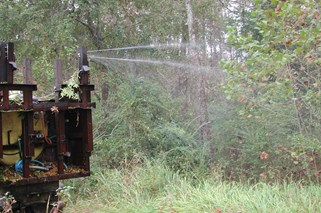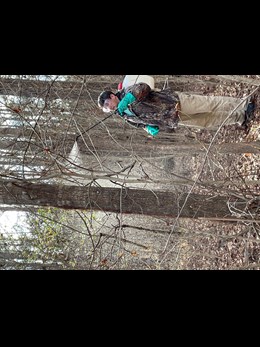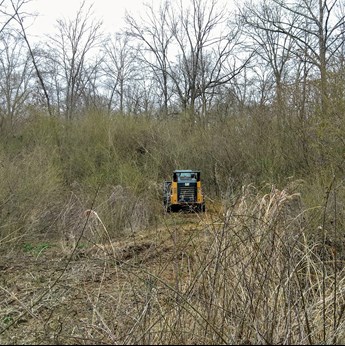Winter Habitat Management - Controlling Chinese Privet
2/15/2022 4:24:32 PM
By MDWFP
One of the key components to managing plant communities for game and non-game species is to promote diversity. A varied composition of plants provides a more diverse array of food items as well as improved cover for animals to avoid predation and shelter their young. Arguably the greatest hindrance to plant community diversity in Mississippi is the widespread presence of aggressive non-native plants, often called “invasive” plants.
Unfortunately, the management of invasive plants can be very challenging. In many instances, managers must use herbicides to control invasive plants and some aggressive native plants. Although herbicides are a useful tool, they can have some negative consequences in terms of collateral damage to desirable plants. Sometimes the risk of injuring desirable plants is outweighed by the need to control undesirable plants. To minimize collateral damage when using herbicides, select the proper herbicide(s) for the specific plant(s) targeted and apply them at the correct time with proper methods. Some herbicides are selective in the types of plants they control. Others are nonselective, but they might be applied in a way to avoid injuring non-target plants. Sometimes it may be beneficial or necessary to conduct other treatments to prepare the area for herbicide application, such as mowing, mulching, or prescribed burning. For more information about applying herbicides to improve habitat on your property, contact an MDWFP Private Lands Biologist at www.mdwfp.com/privatelands.


A great example of minimizing collateral damage is treating Chinese privet (Ligustrum sinense) during the winter months. Unlike most other invasive plants, privet often retains its leaves during the winter when most desirable vegetation has shed leaves and gone dormant. On warmer winter days, managers can apply a glyphosate herbicide at 3% solution (5-6 oz./gallon of solution) using the direct spray method with hand equipment or UTV sprayers. Because glyphosate is a foliar-active herbicide when applied in this manner, dormant vegetation is mostly unaffected. Be sure to get good coverage of the green leaves on each plant and use a high-quality non-ionic surfactant. In some instances, privet may occur in large mots, too big for hand equipment. For large areas covered with privet, managers often use heavy ground equipment to apply glyphosate at a rate of four quarts per acre. Often large thickets of privet in shaded areas go dormant during the winter and lose their leaves. This presents an opportunity to use mechanical treatments like mulching or heavy equipment to knock the privet plants down and prepare them for herbicide application the following growing season. For more information on habitat management, visit www.mdwfp.com/privatelands.











